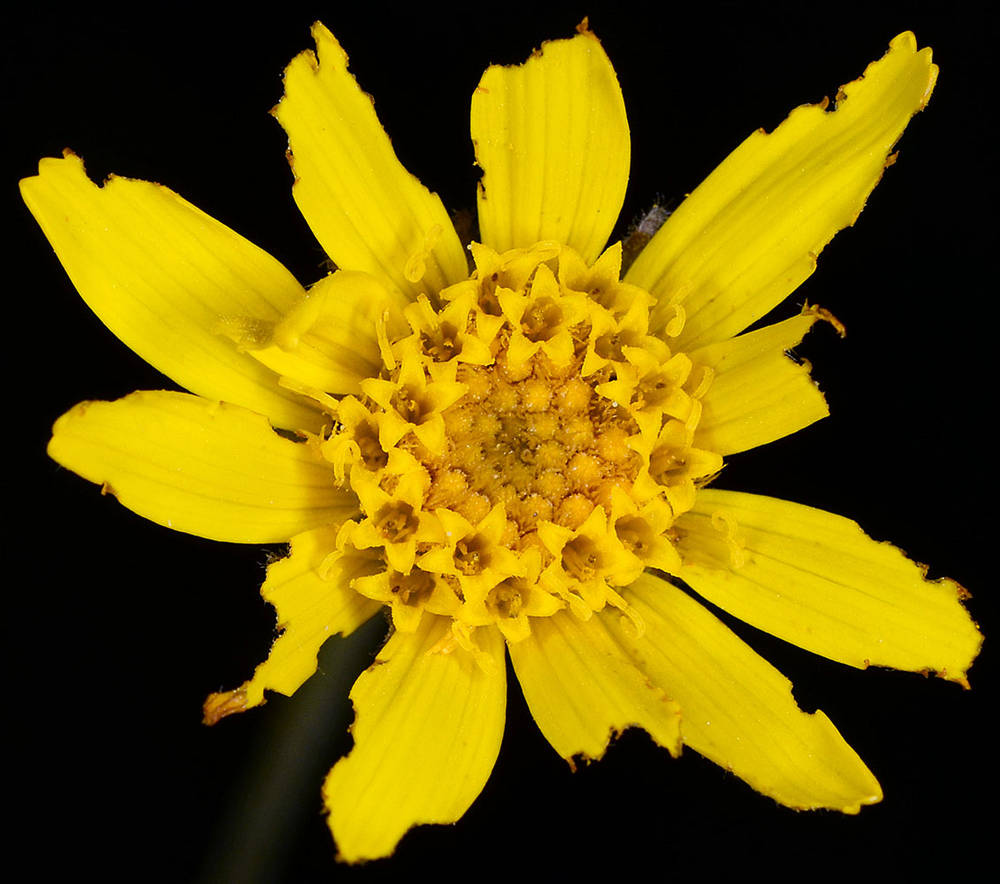
Plants (0.5)1–10 dm; strongly rhizomatous.
Stems simple or branched distally, puberulent to villous or woolly-tomentose, sometimes glabrate proximally.
Basal leaves small, usually withering early.
Cauline leaves 4–10 pairs, well developed; blades narrowly to broadly lanceolate or elliptic, 2–18 cm, margins entire to denticulate or dentate, veins branching laterally, tips acute or obtuse, surfaces glabrous to puberulent, setose, villous, or woolly-tomentose, not glandular; proximally short-petiolate, distally sessile, sometimes winged.
Heads radiate.
Peduncles puberulent to tomentose, sometimes minutely glandular.
Involucres campanulate, 8–13 mm.
Phyllaries lance-linear to lance-elliptic or oblanceolate, tips acute, with conspicuous tuft of white trichomes, surfaces puberulent to tomentose, sometimes minutely glandular.
Ray florets 8–13; rays 5–20 mm, yellow.
Disc florets 30–50+; corollas 7–11 mm, yellow.
Fruits columnar, 4–6 mm, blackish, glabrous to minutely puberulent; pappus bristles 4–6 mm, white or straw-colored, barbellate to subplumose.
2n=38, 57, 76.
Moist meadows, wet forests, streambanks. Flowering May–Sep. 800–2300 m. BR, BW, Casc, ECas, Lava, Owy. CA, NV, ID, WA; throughout Canada and western US. Native.
as described under Arnica chamissonis
Plants 20-80(-150) cm. Stems usually branched from mid heights or distally. Leaves 4-10 pairs, mostly cauline (evenly distributed; basal leaves often withered by flowering, 1-2 pairs, subsessile to short-petiolate); sessile (proximalmost with membranous connate-sheathing bases); blades lance-elliptic, broadly oblanceolate, or oblong, 5-20 × 2-6(-8) cm, margins entire or remotely denticulate to prominently dentate, apices acute, faces nearly glabrous or puberulent to sparsely or densely white-tomentose-pilose. Heads (1-)3-10(-16). Involucres campanulate (rarely hemispheric). Phyllaries 8-23, nearly linear to narrowly lanceolate (apices each with conspicuous tuft of white hairs). Ray florets 8-20; corollas yellow. Disc florets: corollas yellow; anthers yellow. Cypselae gray to brown, 3-8 mm, subglabrous to sparsely hirsutulous, stipitate-glandular; pappi stramineous, bristles barbellate to subplumose. 2n = 38, 57, 76.Flowering Apr-Sep. Moist meadows and conifer forests, stream banks, late snow-melt areas, often montane to subalpine; 0-3500 m; Alta., B.C., Man., N.W.T., Ont., Que., Sask., Yukon; Alaska, Ariz., Calif., Colo., Idaho, Mont., Nev., N.Mex., Oreg., Utah, Wash., Wyo.